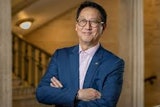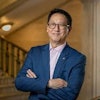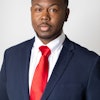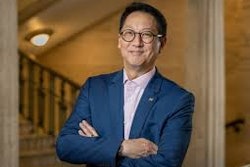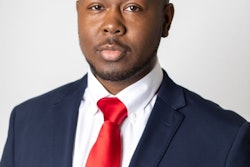A new book examines the strategies of faculty to serve as “change agents,” encouraging diversity on campus.
Teaching a sociology class at Bowdoin College as a graduate student taught Dr. Winnifred R. Brown-Glaude a thing or two about diversity.
There, she introduced her students to “multiple perspectives” on the subject through readings. The student body of Bowdoin, a historic, small, liberal arts college in Brunswick, Maine, is more than 70 percent White, according to the school’s Web site.
In the end, she says that 90 percent of the students “actually loved the class” and found the experience enriching. A small but vocal
minority did not.
“I also had a small percentage of students who pushed back,” says Brown-Glaude, now an assistant professor in the African-American studies department at the College of New Jersey. “They thought, ‘Oh, we shouldn’t be learning about women of color in this class. This kind of teaching … doesn’t belong here.’”
Later, Brown-Glaude says, when she compared notes with colleagues at other schools, she found, “This kind of push back wasn’t unique to me, so when the opportunity came at Rutgers to direct a national study — to really dig into these issues much more deeply — I certainly … jumped on it.”
The professor had done extensive research on race and gender before becoming project director for the Rutgers Institute for Women’s Leadership’s Ford Foundation grant. In that position, she directed a four-year study, “Reaffirming Action: Designs for Diversity in Higher Education.”
The findings of the project are summarized in a new book, Doing Diversity in Higher Education: Faculty Leaders Share Challenges and Strategies, $26.95, by Winnifred R. Brown-Glaude (Editor), Rutgers University Press, (January 2009), ISBN: 978-0, 8135-4447-2, ISBN: 978-0-8135-4446-5.
The book is based on case studies from 12 universities and examines the strategies of faculty “change agents” working to encourage diversity on their campuses. Among the universities represented are Columbia University, Spelman College and Smith College, as well as several state universities. Faculty teams selected examples of diversity efforts from their campuses for the study.
Examples included a Caribbean writer’s institute at the University of Miami undertaken for literary purposes that has fostered diversity and a required course at Spelman, on the African Diaspora, that explores intraracial differences.
Doing Diversity argues that the voices of educators and scholars who advocate for diversity and espouse its benefits for education “are rarely heard in public.”
As a result, Brown-Glaude says, the debate over diversity is often hijacked by the opponents who keep the focus on race, instead of broader definitions to include women, ethnicity, people with disabilities and other kinds of differences.
“They tend to reduce conversations around diversity to quotas, which are then described as systems of racial preferences. These types of debates tend to lock us in to a back-and-forth tug of war, which really has not been productive.”
When advocates do speak, the book argues, they focus on the legacy of discrimination, rather than on the educational benefits of having a more representative, inclusive college population.
Brown-Glaude claims that the debate is stalled because it also focuses too much on “top-down” solutions, the policies of institutions.
“We tend to miss, we argue in this book, transformations for diversity from the bottom up,” she says. “This is where faculty and K-12 teachers come in. These are the people who have had first-hand experience with diversity or the lack of it on their students’ experiences and learning.”
On academic campuses, she says, “diversity work” — defined as any activity that encourages inclusiveness — is often not valued or rewarded, especially when faculty members seek tenure.
“We are really trying to change that,” Brown-Glaude says.
The work that is done is left to very senior, tenured educators, mostly people of color and women, though not exclusively, who are more secure in their positions, Brown-Glaude notes.
Even they face risks, however, she says, noting that one faculty member declined to be in the study because he feared that public attention would jeopardize support for his program.
“This kind of fear and the tendency of faculty to do this work under the radar is part of the problem,” says Brown-Glaude.
Brown-Glaude says she believes that the election of President Barack Obama as an African-American in the Oval Office will “make this work more difficult.”
“I think we are going to come up against the argument, ‘Well, how can you claim diversity is still an issue when we have an African-American as president? How can you say the plight of women is still a challenge when you have a female secretary of state?’” she explains.
She says those are “fair questions” that diversity advocates should address, adding that “our college or university system still needs more work with regard to diversity, and we still have to find ways to have that conversation.”
For one thing, she concludes, the global economy demands that students be able to compete, and diversity helps prepare them to negotiate the turf.
As a companion to the book, a faculty survey on diversity has also been commissioned by the project. For more information, contact: Sarah Fenstermaker, [email protected] or John Mohr, [email protected].
© Copyright 2005 by DiverseEducation.com

